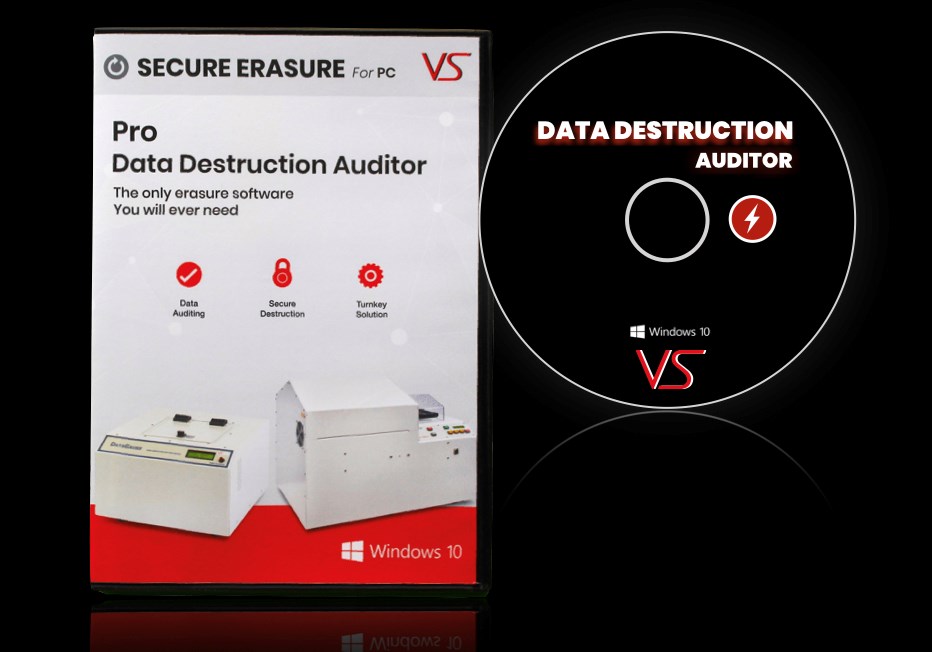Important Cyber Security Practices for Effective Data Destruction Techniques
Important Cyber Security Practices for Effective Data Destruction Techniques
Blog Article
The Significance of Effective Data Damage Practices in Safeguarding Sensitive Info and Ensuring Computer Safety
In an era where information violations are increasingly usual, the importance of efficient information damage methods can not be overemphasized. Organizations face substantial threats when delicate information is improperly thrown away, possibly bring about unapproved access and extreme financial effects. Implementing durable data damage techniques not only mitigates these dangers yet also aligns with lawful compliance needs, guaranteeing that companies support their credibility and foster customer trust. The concern continues to be: what details approaches can be employed to boost these techniques, and how can organizations efficiently incorporate them into their overall cybersecurity structure?
Comprehending Data Destruction
Understanding information damage is crucial in today's digital landscape, where delicate information can conveniently be jeopardized. Reliable data damage includes not just removing documents yet guaranteeing that data is irretrievable through detailed techniques. This process is vital for companies that take care of personal customer details, intellectual residential property, or internal records, as any type of breach can bring about serious monetary and reputational effects.
Information damage includes numerous strategies, consisting of shredding physical media, degaussing magnetic storage tools, and employing software-based services that overwrite data multiple times. Each technique serves a certain function and must straighten with the level of sensitivity of the info being gotten rid of. For instance, physical destruction is often favored for hard disk drives consisting of extremely confidential data, while software program techniques could suffice for less sensitive information.
Additionally, adhering to sector requirements and regulations, such as the General Data Security Regulation (GDPR) or the Wellness Insurance Coverage Mobility and Responsibility Act (HIPAA), is important for compliance and to reduce lawful threats. Organizations should develop a durable data damage plan, train staff members on ideal practices, and routinely audit their treatments to make certain that all sensitive info is disposed of securely and successfully.
Dangers of Inadequate Practices
Inadequate data destruction methods subject companies to significant threats that can have far-reaching effects. When sensitive info is not properly disposed of, it remains prone to unapproved accessibility, which can bring about information violations and identity theft. Such events not just endanger the protection of individuals but also tarnish the organization's online reputation, resulting in a loss of client trust fund and possible economic repercussions.
In addition, regulative conformity is significantly stringent in several markets. Failure to follow information destruction regulations can cause substantial penalties and legal actions versus companies. These charges can strain funds and draw away interest from core organization procedures.
In addition, the misuse of residual data can bring about copyright burglary or business reconnaissance, endangering affordable benefits (data destruction). The effect of poor data devastation expands beyond immediate financial losses; it can also lead to long-lasting damage to brand integrity and market position

Organizations must identify that information safety is not entirely about preventing violations; it likewise incorporates the accountable administration of data throughout its lifecycle. Neglecting effective information devastation procedures can have devastating ramifications, underscoring the requirement for durable steps to minimize these dangers.
Finest Practices for Data Devastation
Implementing effective data devastation methods is necessary for safeguarding delicate details and preserving conformity with regulatory standards. Organizations ought to adopt a multi-faceted approach to make certain that information is irretrievable, thus stopping unauthorized accessibility and possible violations.
First, information ought to be categorized based upon level of sensitivity, permitting companies to apply ideal destruction methods tailored to the degree of danger. For digital data, using software-based data-wiping devices that follow market criteria can effectively overwrite existing information. Physical destruction techniques, such as shredding or degaussing, are crucial for devices that save delicate information, guaranteeing full obliteration.
Developing a clear information retention policy is important, describing for how long various sorts of info should be maintained prior to devastation. Regular audits of information storage systems are additionally necessary to recognize unneeded or outdated data needing elimination.
Additionally, training workers on the significance of data devastation and the particular methods to adhere to fosters a society of protection within the company. Preserving documents of information destruction refines offers responsibility and supports conformity with outside policies and internal policies. By sticking to these best techniques, companies can significantly mitigate the threats connected with data direct exposure.
Legal and Conformity Factors To Consider

Failing to follow these policies can result in serious penalties, including considerable penalties and reputational damage. Organizations must implement a robust data damage plan that straightens with these lawful frameworks and supplies clear guidelines on the correct approaches of information disposal, whether physical shredding or electronic cleaning.
Additionally, maintaining documents of data damage tasks is necessary for showing conformity throughout audits or examinations. By prioritizing legal and compliance factors to consider, companies can improve their data security pose and foster count on with stakeholders and customers, ultimately adding to a much more safe data administration atmosphere.
Advantages of Effective Information Damage
Reliable information devastation techniques extend beyond mere compliance; they supply substantial advantages to companies that prioritize them. By ensuring that delicate details is irretrievably destroyed, organizations reduce the threat of information breaches and the prospective economic repercussions connected with them. This aggressive method not only safeguards against unauthorized gain access to yet also improves the general reliability of the company in the eyes of stakeholders and clients.
Executing durable information destruction approaches, such as physical devastation of storage space gadgets or sophisticated data cleaning techniques, adds to the conditioning of an organization's cybersecurity pose. data destruction. It lowers the probability of copyright theft and shields proprietary details, thus keeping an affordable side on the market

Verdict
In verdict, reliable data devastation techniques are important for guarding delicate information and enhancing overall computer safety and security. Inevitably, a dedication to robust data damage approaches fosters a society of responsibility, thus strengthening an organization's cybersecurity position and preserving client count on.

Report this page